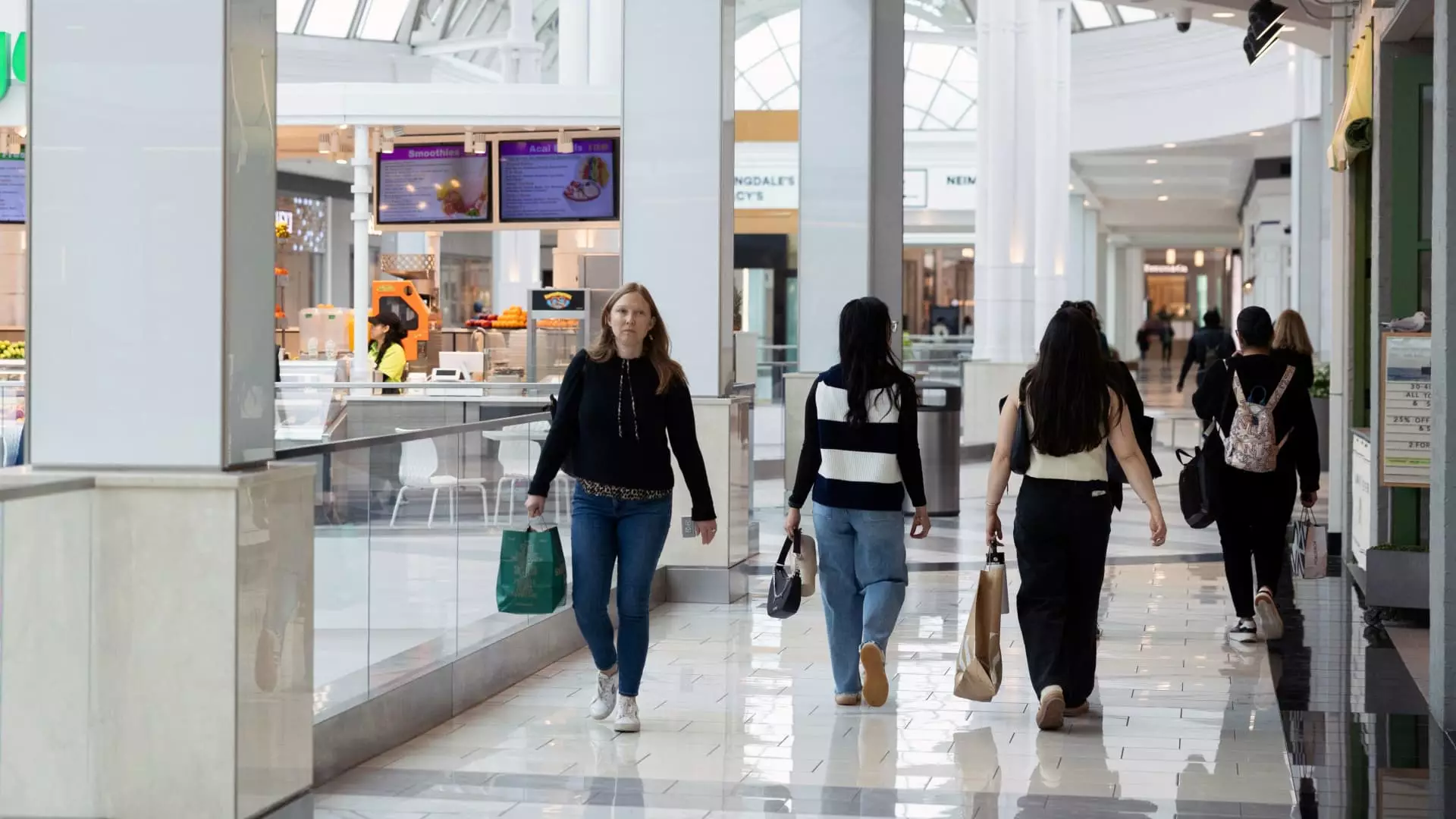As we step into the year 2025, the American consumer landscape is starkly polarized, revealing an unsettling dichotomy between lower-income and affluent consumers. This division has implications that go beyond mere spending habits; it raises questions about the sustainability of the economy and the future of social equity in America. Reports from U.S. credit card lenders paint a concerning picture: while wealthier individuals spend on lavish experiences and luxury goods, those at the bottom of the economic ladder are increasingly constrained, focusing on essential needs. Such disparities in consumer behavior are not simply anecdotal; they reflect deeper economic fractures influenced by ongoing financial uncertainties.
The Impact of Policy and Economic Pressure
The anxiety stemming from President Donald Trump’s trade policies looms large over the economy, manifesting in consumer sentiment that has taken a noticeable downturn for lower-income earners. This segment of the population is feeling the pinch of inflation very acutely. Data from Synchrony, a financial services company, indicates that spending among its lower-income clientele decreased by 4% in the first quarter, highlighting how insecure economic conditions lead to cautious consumer behavior. This is in stark contrast to companies like American Express and JPMorgan Chase, where spending has surged; their wealthier customer bases are largely insulated from the prevailing economic woes.
The current consumer sentiment underscores a troubling trend: Americans across the board are feeling economic pressure, but the affluent are weathering the storm by reallocating their spending towards luxury dining and travel. A 7% increase in spending by American Express customers on dining out and a staggering 11% surge in business flight upgrades signal that, for some, the good times are far from over. This paradox existence raises a critical question: how long can the economy sustain itself when consumer confidence is so drastically split along economic lines?
The Reality of Debt and Credit Dependency
Compounding the problem is a worrying increase in credit card usage among lower-income Americans. The latest figures from the Federal Reserve Bank of Philadelphia reveal that 11.1% of credit card users are making only minimum payments, the highest ratio seen in 12 years. This suggests a growing reliance on credit to navigate daily expenses, which is unsustainable in the long term. The cycle of debt tends to entrap those who can least afford it, illustrating a vicious cycle that could lead to a more significant financial crisis if left unaddressed.
In contrast, credit card lenders serving wealthier clients appear unscathed by these challenges. Analysts like Brian Foran from Truist have noted that the high-end market continues to thrive, even as those on the lower tier pull back on discretionary spending. This creates an economic environment where wealth begets further prosperity, while the financially vulnerable struggle to stay afloat. Such an imbalance raises important questions about the ethical implications of current financial systems. Is our economy functioning optimally if the rich are becoming richer while the poor are mired in debt?
Consumer Behavior: A Reflection of Uncertainty
As we delve deeper into consumer behavior, it becomes clear that spending is no longer a straightforward indicator of economic health. The rising trend of consumers gravitating towards essential goods—electronics, furniture, and auto parts—reveals a deeper uncertainty about the future. People are reluctant to engage in large purchases when they fear that rising tariffs and inflation will dramatically alter costs in the near term. Bread Financial’s CFO Perry Beberman pointed out that consumers are “trying to figure out” their next steps amidst these constraints.
This cautious shift towards essentials is not merely a phase; it is indicative of a broader re-evaluation of consumer habits. The more affluent feel empowered to splurge as long as their financial status allows it, but lower-income consumers are left grappling with scarcity. This emerging behavioral pattern signifies a future where economic decisions are increasingly informed by apprehension rather than confidence.
As the consumers divide appears to grow, one cannot help but fear the ramifications of such disparity. The dynamics at play will shape America’s economic future and, more importantly, the societal fabric that binds us together. While the affluent thrive, the economically vulnerable are negatively impacted, creating a rift that could destabilize public trust in both the market and governance. The question is not merely about consumption; it concerns the profound social implications of how our economy, shaped by policy and economic realities, treats its most vulnerable citizens.

